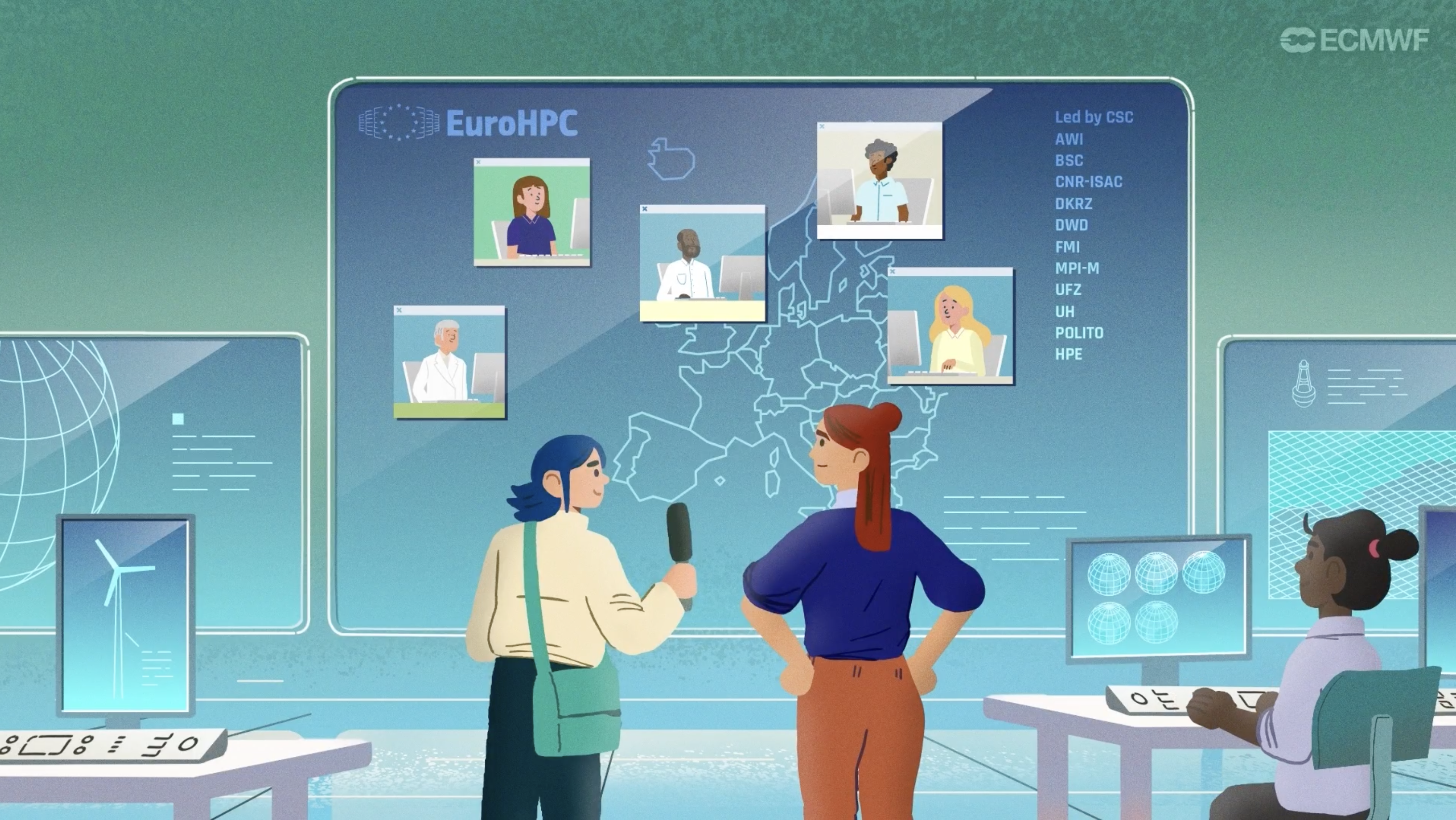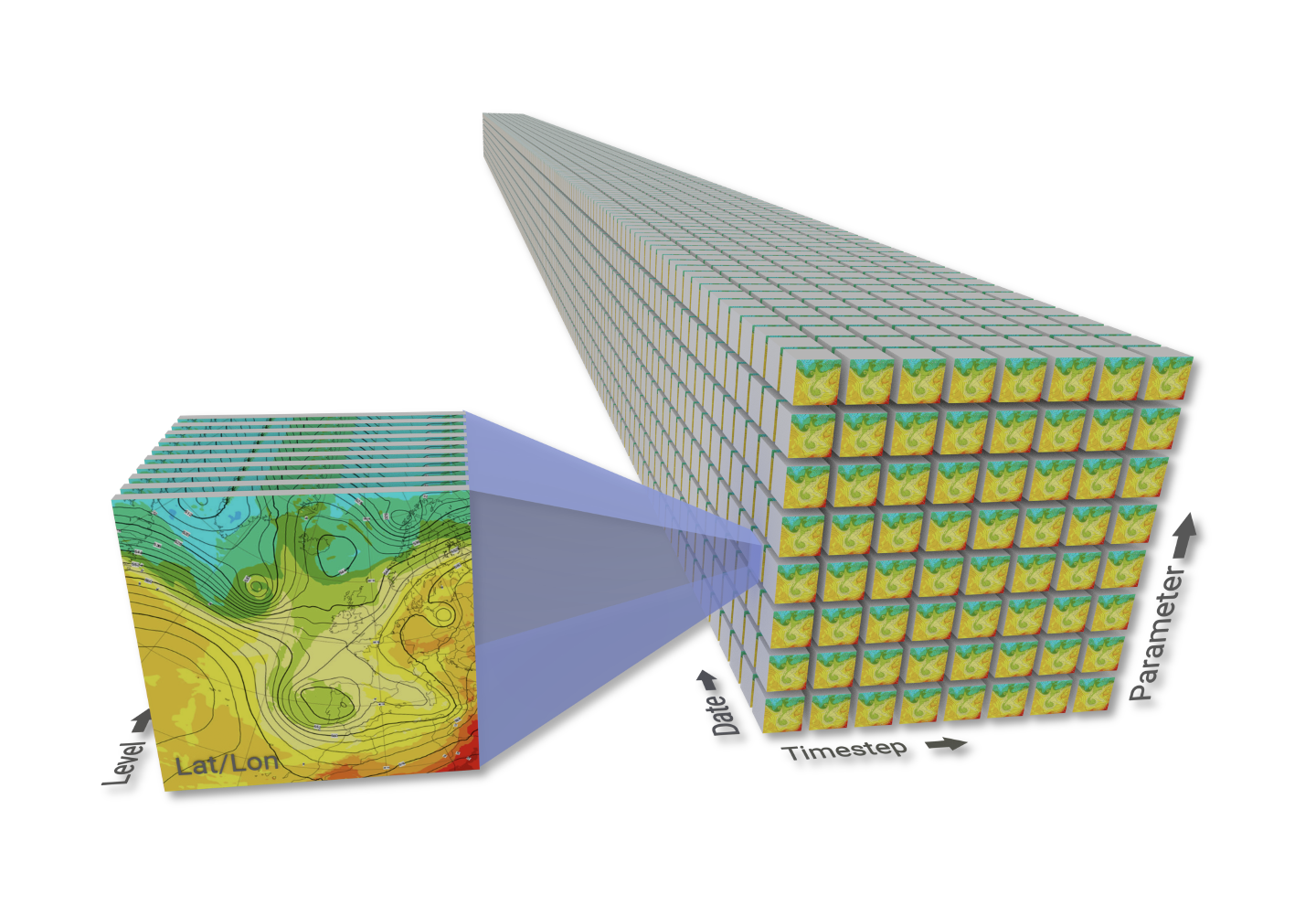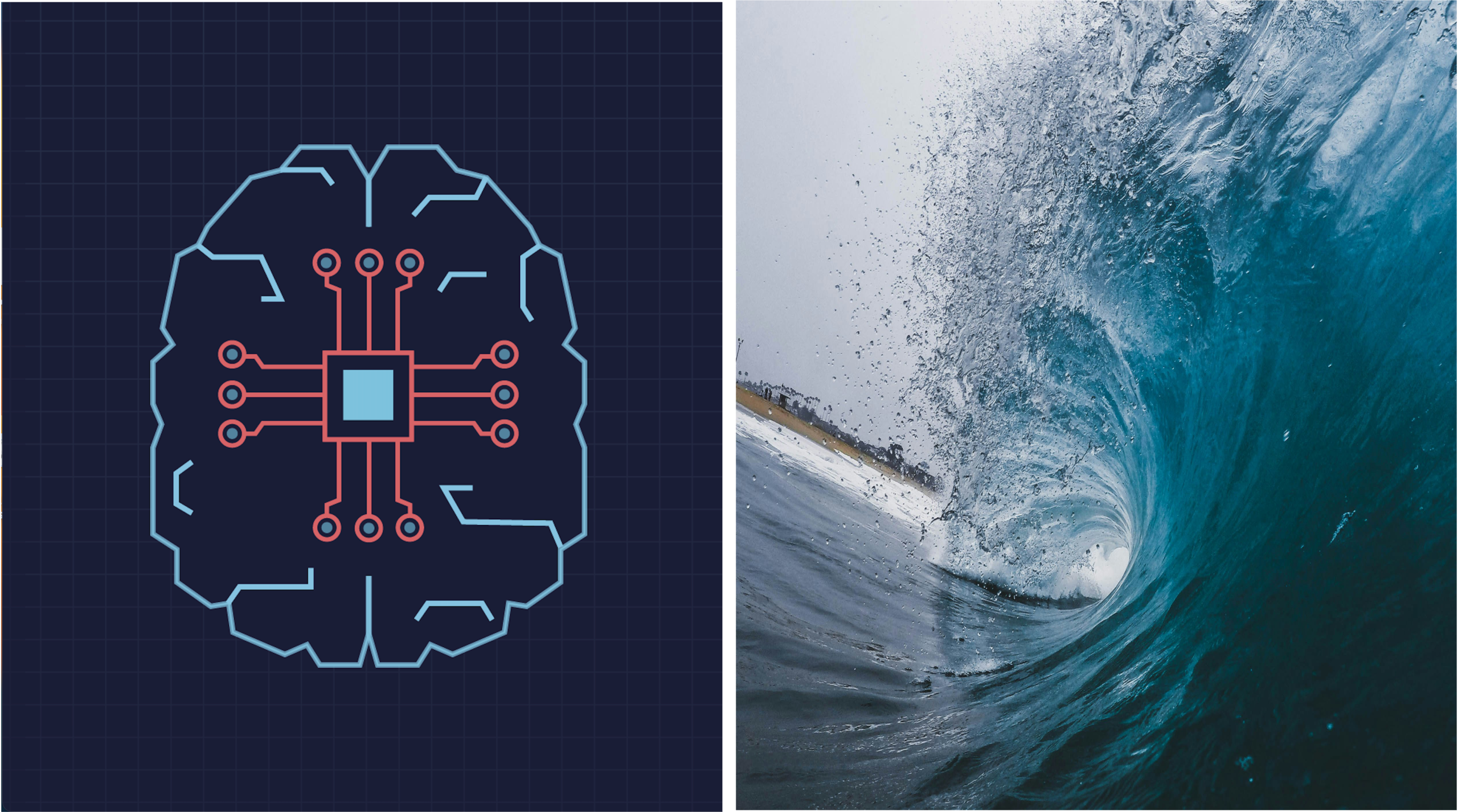
In our latest Destination Earth (DestinE) animation episode, Rosa delves deeper into the cutting-edge world of Digital Twins, focusing on the Climate Change Adaptation Digital Twin (Climate DT). Watch it now below.
After Rosa experiences a heatwave firsthand, she becomes curious about how technology can help societies better adapt and prepare to extreme weather events and consequences of climate change. Her journey takes her to urban planners and water managers, professionals on the frontlines of climate adaptation, who share their challenges in protecting cities from rising temperatures and increasing flood risks.
The episode explores how the Climate DT can support these efforts by harnessing high-resolution climate models, next-generation supercomputers, innovative digital technologies and flexible workflows. It helps understand how the Climate DT can be applied in real-world scenarios, from helping cities mitigate the Urban Heat Island effect to preparing for extreme flooding. With the ability to simulate future climate conditions and “what-if” scenarios at an unprecedented scale, it offers a powerful tool for building resilience and safeguarding communities.
About the Climate Change Adaptation Digital Twin
The Climate DT represents the first ever attempt to operationalise the production of global multi-decadal climate projections, leveraging the world-leading supercomputing facilities of the EuroHPC Joint Undertaking along with some of the leading European climate models. It is implemented by a partnership led by CSC, currently involving 12 leading climate institutions, supercomputing centres, national meteorological services, academia and industrial partners, through a contract procured by ECMWF.
More information on the Climate DT.
Destination Earth is a European Union funded initiative launched in 2022, with the aim to build a digital replica of the Earth system by 2030. The initiative is being jointly implemented by three entrusted entities: the European Centre for Medium-Range Weather Forecasts (ECMWF) responsible for the creation of the first two ‘digital twins’ and the ‘Digital Twin Engine’, the European Space Agency (ESA) responsible for building the ‘Core Service Platform’, and the European Organisation for the Exploitation of Meteorological Satellites (EUMETSAT), responsible for the creation of the ‘Data Lake’.
We acknowledge the EuroHPC Joint Undertaking for awarding this project strategic access to the EuroHPC supercomputers LUMI, hosted by CSC (Finland) and the LUMI consortium, Marenostrum5, hosted by BSC (Spain) Leonardo, hosted by Cineca (Italy) and MeluXina, hosted by LuxProvide (Luxembourg) through a EuroHPC Special Access call.
More information about Destination Earth is on the Destination Earth website and the EU Commission website.
For more information about ECMWF’s role visit ecmwf.int/DestinE
For any questions related to the role of ECMWF in Destination Earth, please use the following email links:


